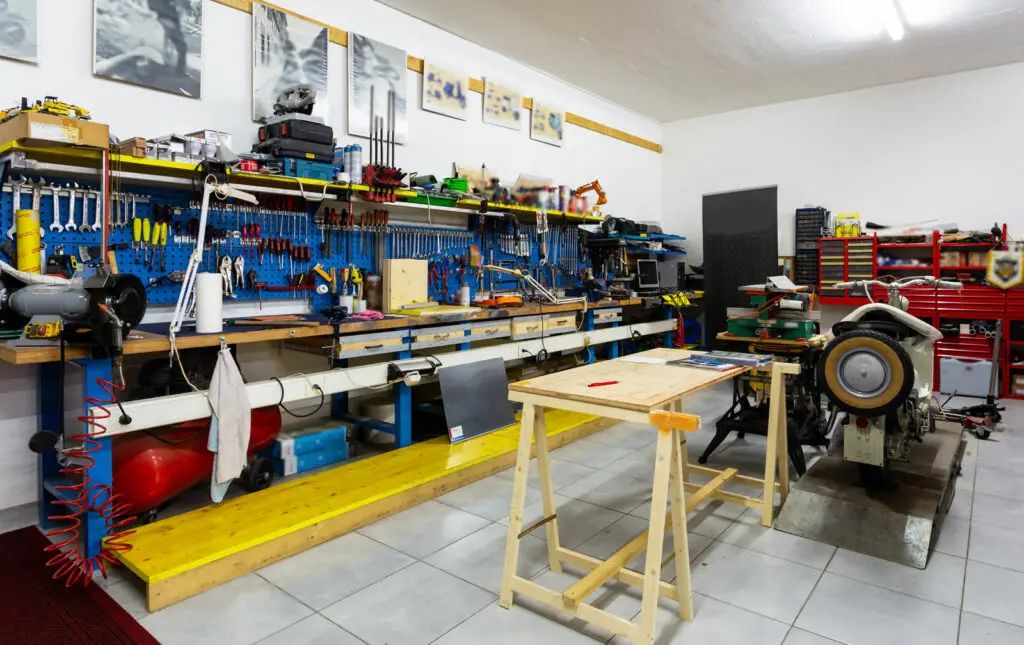Are you looking for ways to manage the temperature of your garage space? It’s never fun working away on a car project, or on your work bench in a sweltering heated or blisteringly cold workspace.
Sometimes that portable space heater just isn’t getting the job done and you’re tired of being cold while you’re working in your garage.
Luckily, there are many different ways to turn your garage from an uncomfortable living space into a comfortable place where you can indulge your hobbies, restore that car, and get work done without all the discomfort that comes from a non-climate controlled room! Heating and cooling systems come in all shapes and sizes, making them suitable for any budget.
In this article, I’ll explain the best way to heat and cool a garage so that it can be as comfortable as possible.
By the way – before we get too far along here, if you want to connect with other homeowners and builders and get more great ideas for your home to make your space the best join my free private Facebook group, Remodel Reality here.
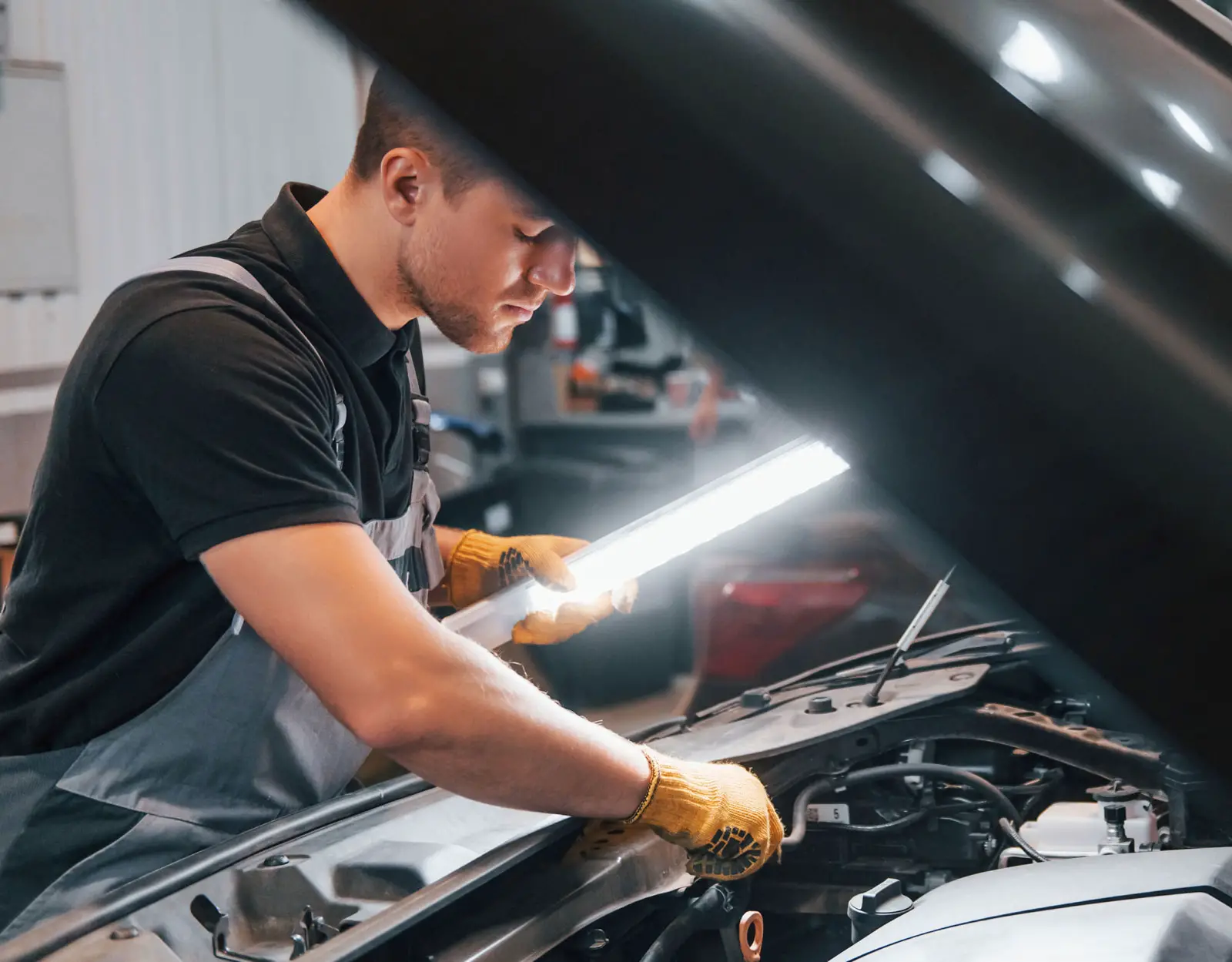 Factors to Consider When Heating & Cooling A Garage
Factors to Consider When Heating & Cooling A Garage
When choosing an appropriate heating/cooling system for your space, there are several factors that need to be taken into account. let’s take a look.
Size of the garage
The size of your space will determine which type of heater/cooler is necessary for optimal performance as well as how much power will be required per hour to reach desired temperature levels.
Climate of the region
Knowing the climate in the region where you live will let you know what kind of insulation might be needed for maximum protection against changing temperatures (i.e.: rain/snow) to keep cold air out and warm air in. In areas with high humidity levels, using fans could also help maximize comfort levels during summer months by keeping air circulating properly inside the space.
Insulation of the Garage
Proper insulation helps regulate temperature shifts in colder seasons as well as keeps exterior elements (i.e.: dust particles) from entering through open areas like windows or cracks/gaps around door frames if present.
This is especially true if you’ve got an older house that was built in the 80s and still has its original windows.
This could help reduce energy costs needed to maintain desired temperatures during colder months while keeping allergies at bay throughout spring/summer seasons too!
Purpose of the Garage
You also have to think about what activities take place in your garage space prior to selecting any particular type of heater/cooler system. Are you building out a workshop? Doing a restoration of a car? Want to use it as a gym?
The possibilities for what you can use your garage for are endless, but in order to get the right solution in place for your heating & cooling needs you need to get a clear picture of what you’re going to use it for. This way, you and any guests visiting can enjoy their experience without feeling overwhelmed due to extreme heat/cold conditions inside.
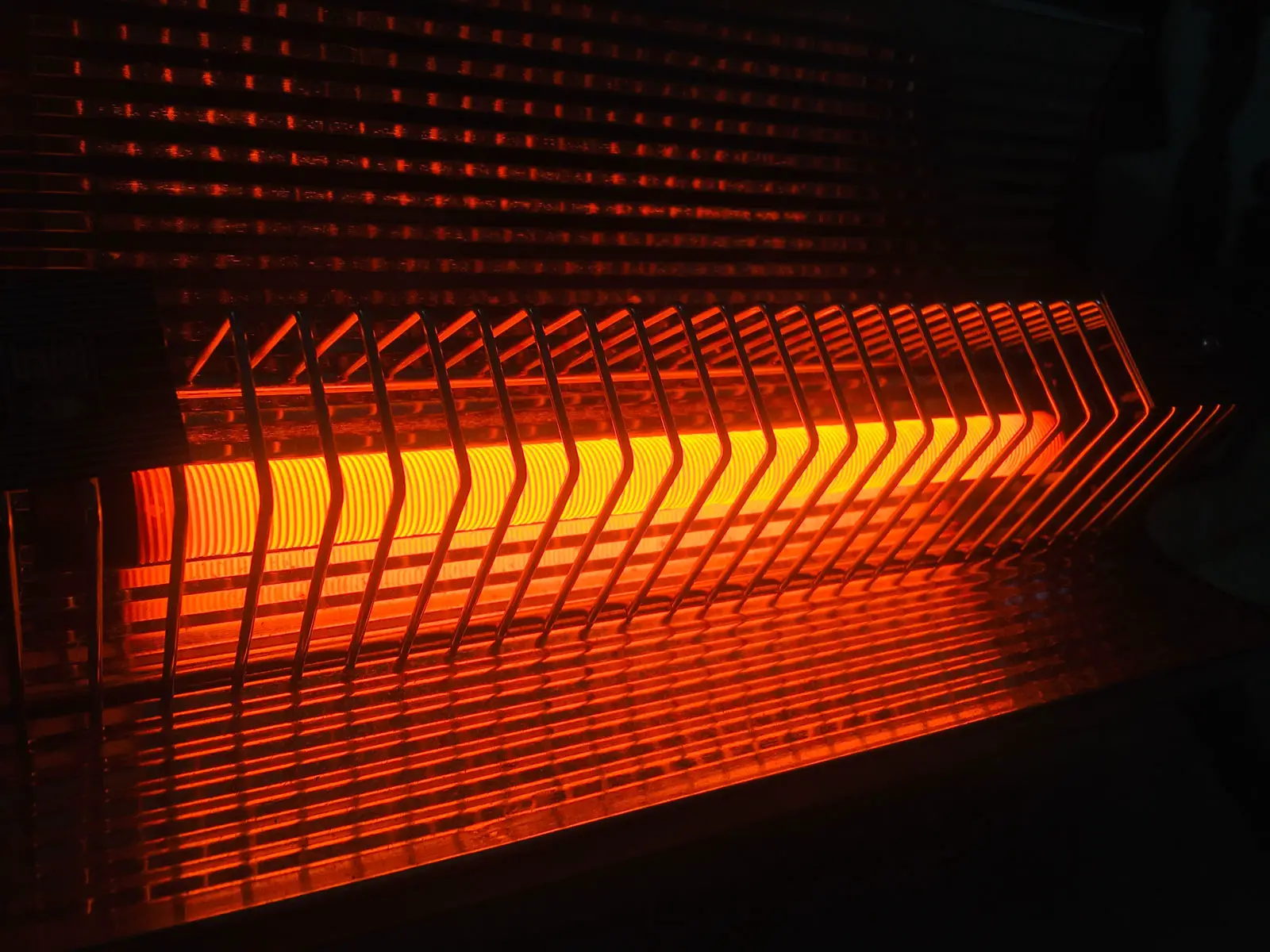 Heating Options for Garages
Heating Options for Garages
There are several options available to effectively warm up your garage. Let’s take a look at some of the best options:
Ductless Mini-Splits
A ductless mini split system may be the single best option for heating your garage. A ductless system has become the go-to solution for so many home owners and they’re becoming increasingly popular in garages around the world due to their energy efficiency and ability to cool and heat a space. They work by using a small outdoor unit and an indoor unit that distributes cooling or heating throughout the garage. This type of system is advantageous because it doesn’t require costly ductwork installation, making it more affordable than traditional split systems.
Pros and Cons of Ductless Min-split Units:
| Pros | Cons |
|---|---|
| Popular and efficient, can cool and heat | Expensive installation cost |
| Does not require costly ducts | Installation requires professional technicians |
Heat Pump
A heat pump is an effective way to maintain the temperature of a garage. In winter, it transfers external heat inside, and in summer it moves internal heat outside. The efficiency of the heat pump system depends on the size (based on the square footage) and climate of the garage, as well as proper insulation.
Pros and Cons of heat pumps for heating:
| Pros | Cons |
|---|---|
| Energy-efficient | Heat pumps may not be suitable for all homes |
| Quiet operation | Heat pumps can be affected by environmental factors such as shade or wind |
Window Units
Window units are another heating option for garages, and they’re becoming increasingly popular due to their energy efficiency and quick and simple installation. While they’re easier on the pocketbook than ductless mini-splits, they’re generally noisier and may not be powerful enough for large garages.
Pros and Cons of Window Units for heating:
| Pros | Cons |
|---|---|
| Energy-efficient | Noisy operation |
| Quick and simple installation | May not be powerful enough for larger garages |
Portable Units
Portable electric garage heaters are one of the most popular and accessible heating options for garages. A portable system doesn’t take hardly any time to set up, and they’re a quick and efficient heating source. There are several types of portable heaters available, including electric space heaters, gas-fired heaters, and wood- or pellet-fired heaters.
Pros and Cons of Portable Units:
| Pros | Cons |
|---|---|
| Easy to install and move around | Limited in efficacy (especially for larger garages) |
| More economical than other heating systems | Can take up a lot of valuable floor space |
Through-the-wall Systems
Through-the-wall systems are similar to window units, but they require a hole in the wall and they’re typically available in smaller sizes. While these systems may provide more power than window units, they’re also permanent and cannot be moved around or uninstalled easily.
Pros and Cons of Through-the-wall Systems:
| Pros | Cons |
|---|---|
| Easy to install | Limited size options |
| More powerful than window units | Permanent installation |
Infrared Heaters
Using an infrared heater is an efficient and effective ways to heat up a space because they use electromagnetic radiation to directly warm objects, instead of heating the air around them. These heaters come in different sizes and designs, including free-standing units and wall-mounted models. They provide heat quickly, with minimal energy waste.
Pros & cons of infrared heaters
| Pros | Cons |
|---|---|
| great for spot heating | more expensive to purchase |
| more energy-efficient than other types of heaters | not effective at heating large areas |
Convection Heaters
A convection heater uses a heating element to generate a convection current and circulate warm air throughout the room. This allows for even and efficient heating, without leaving any cold spots. Different designs are available, such as portable units and baseboard models.
Pros & cons of convection heaters
| Pros | Cons |
|---|---|
| effective at heating entire rooms or large areas | can take longer to warm up a room than other types of heaters |
| more affordable than other types of heaters | may be less energy-efficient than other types of heaters |
Radiant Floor Heating
Radiant floor heating is an efficient solution for garages and other enclosed spaces. There are two main types of radiant floor heating: electric and hydronic.
Pros & cons of radiant floor heating
| Pros | Cons |
|---|---|
| Efficient and straightforward to install | Expensive cost |
| Offers a comfortable, even heat source |
Forced-Air Heating System
A forced air system, commonly known as central heating & air conditioning, can be designed to include an air conditioning unit in addition to the heating unit, providing both heating and cooling capabilities. This type of system can be particularly useful in a garage, because it can provide steady, even, permanent control over the temperature delivering a comfortable working environment year-round, even in extreme temperatures.
Pros & cons of forced air heating
| Pros | Cons |
|---|---|
| Cost-effective | Noise |
| Efficient | Dust and allergens |
| Versatile (can be used for heating and cooling) | Only useful if the unit is dedicated specifically for garage use |
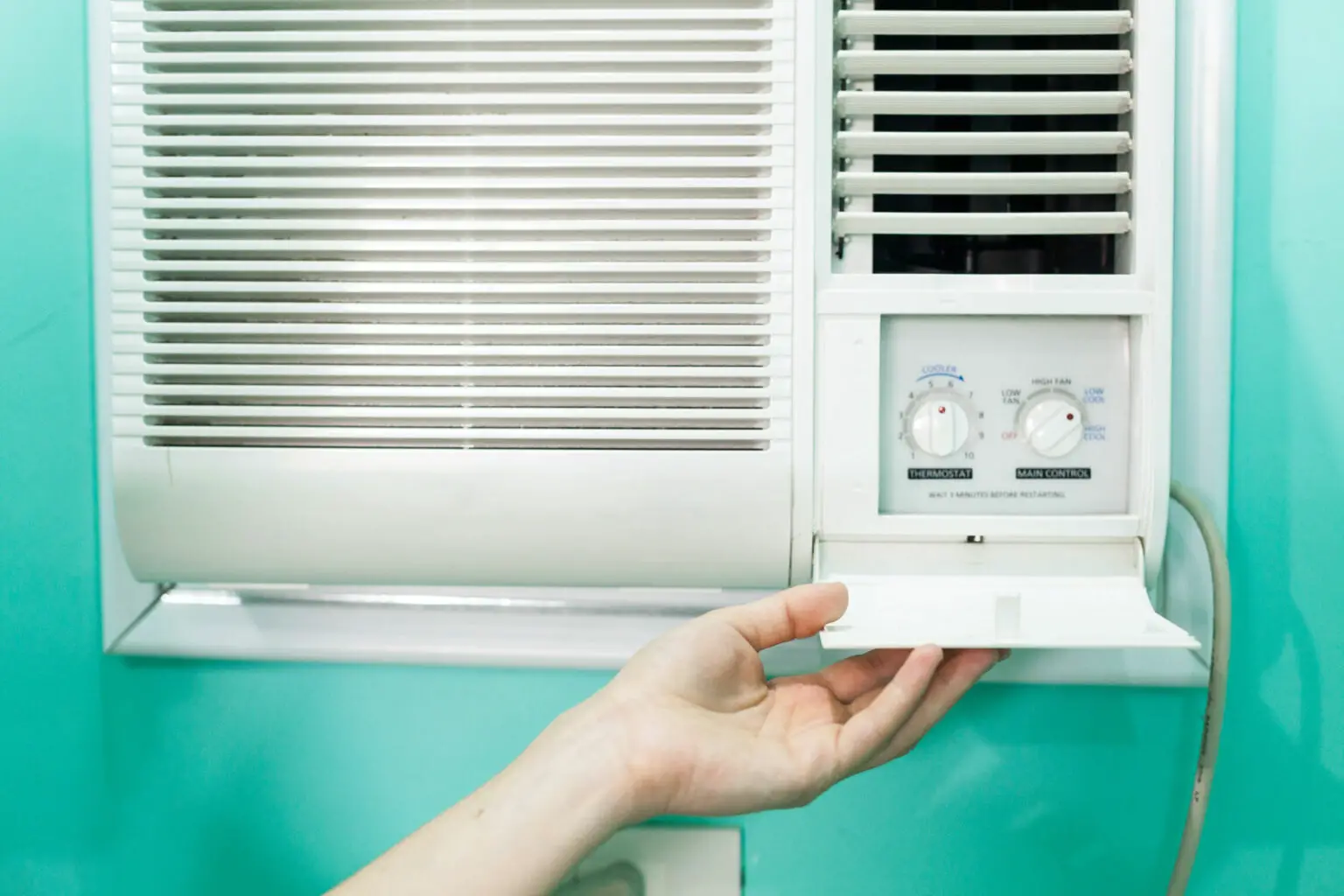 Cooling Options for Garages
Cooling Options for Garages
Keeping your garage cool during hot summer days can be difficult, but there are several options available for effectively cooling it down. Here are options that will keep your garage cool and comfortable.
Portable Air Conditioners
Portable air conditioners are a great way to keep a garage cool during the hot summer months. The portability of these units makes them ideal for garages that don’t have access to fixed air conditioning systems as they can be easily moved from one part of the garage to another. Portable air conditioners come in various sizes and styles so you can find one that suits your needs. They also offer energy-efficient features such as automatic temperature control and timers which make cooling your garage simple and cost effective.
| Pros | Cons | |
|---|---|---|
| Portable and easy to move | Limited cooling capacity | |
| Comes in various sizes and styles | Noisy operation | |
| Energy-efficient features available | ||
| Requires a separate exhaust system to vent hot air |
Ductless mini-splits
Ductless mini-splits are also a great cooling option for garages or other enclosed spaces. These systems have both an indoor and outdoor component, and are relatively efficient to run.
Pros and Cons of Ductless Min-split Units:
| Pros | Cons |
|---|---|
| Popular and efficient, can cool and heat | Expensive installation cost |
| Does not require costly ducts | Installation requires professional technicians |
Window Units
Window units are a great cooling option for garages. They are the least expensive option, and can be installed with relative ease.
Pros and Cons of Window Units for Cooling:
| Pros | Cons |
|---|---|
| Energy-efficient | Noisy operation |
| Quick and simple installation | May not be powerful enough for larger garages |
Through-the-wall Units
Through-the-wall units are a great cooling option for garages. They provide both heat and cooling capabilities, and are relatively quiet compared to other cooling options.
Pros vs. Cons of Through-the-Wall Units:
| Pros | Cons |
|---|---|
| Quiet compared to other options | Come in limited sizes |
| Can provide both heating and cooling capabilities | Unit is permanent once installed |
| Low maintenance requirements |
Forced-Air Heating System
A forced air system can be designed to include an air conditioning unit in addition to the heating unit, providing both heating and cooling capabilities. This type of system can be particularly useful in a garage, as it can provide a comfortable working environment year-round, even in extreme temperatures.
| Pros | Cons |
|---|---|
| Cost-effective | Noise |
| Efficient | Dust and allergens |
| Versatile (can be used for heating and cooling) | Only useful if the unit is dedicated specifically for garage use |
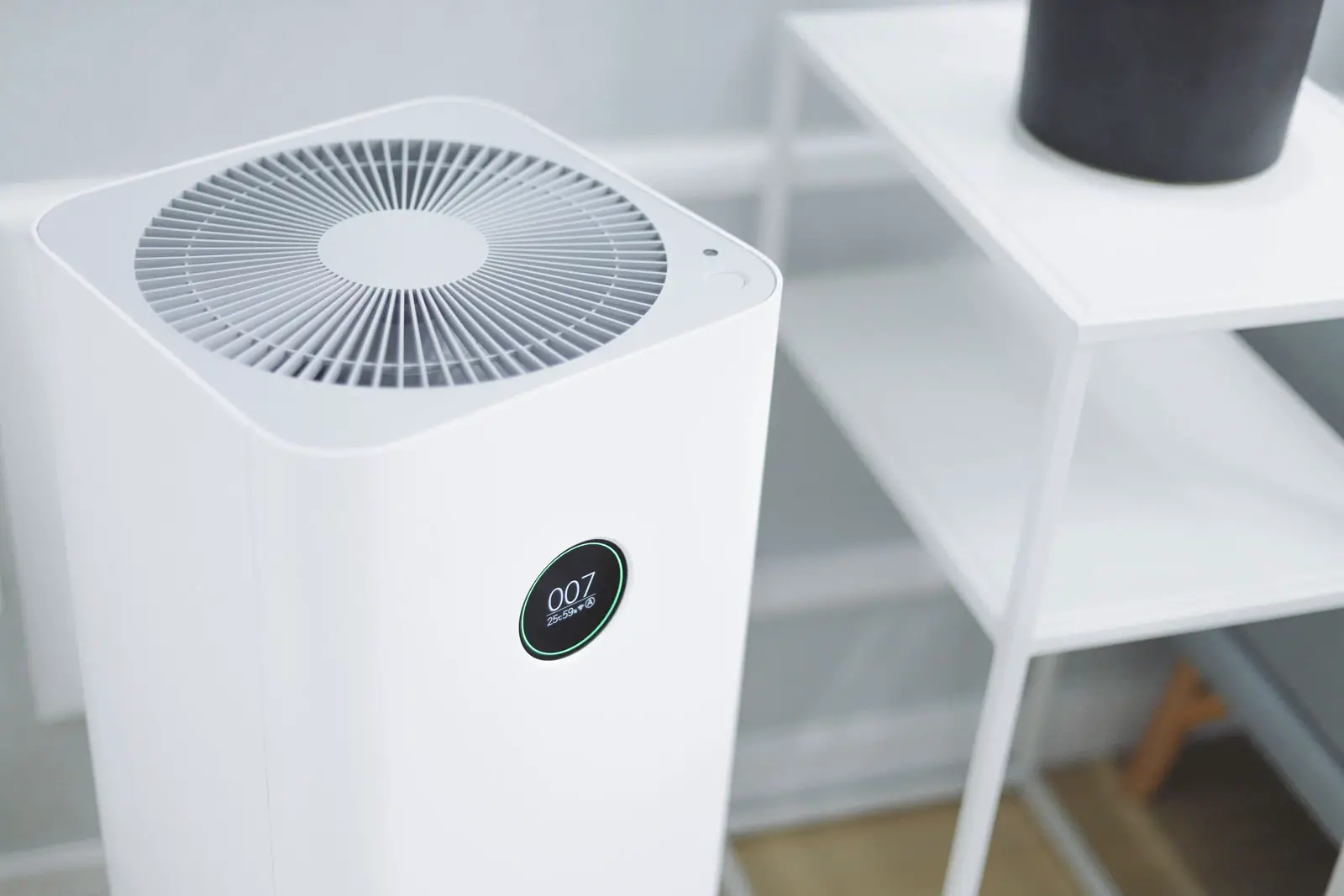 Improving Energy Efficiency in Garages
Improving Energy Efficiency in Garages
Heating and cooling your home is usually one of the biggest costs when it comes to your utility bill. And when you add another area like a garage that isn’t traditionally well insulated, your utility bills could potentially soar.
However, there are several easy steps you can take to make your garage more energy efficient. From adding insulation and sealing off air leaks to replacing windows and appliances, here are some ways to improve your garage’s energy efficiency:
Add or Replace Insulation
Adding or replacing insulation is one of the best ways to increase energy efficiency in your garage. Insulation helps keep warm air inside during the winter and cool air in during the summer, making it easier to regulate temperatures and reduce energy costs.
Seal Off Air Leaks
Air leaks can be another major source of energy waste in garages. Make sure all entry points around doors and windows are sealed up properly with caulking or weather-stripping, as these can help reduce heat loss in the winter and prevent hot air from entering during the summer months.
Install New Windows, Light Bulbs, and Appliances
Installing new windows that are designed for maximum efficiency can also help reduce energy costs. Look for low-E glass options with ultraviolet protection to keep out UV rays that could cause fading on furniture and carpets. Additionally, make sure all light bulbs are LED or CFL models instead of incandescent ones, which require more electricity to work. Finally, switch out any old or inefficient appliances for newer Energy Star models that will run more efficiently without using as much power.
 Calculating Heating and Cooling Requirements
Calculating Heating and Cooling Requirements
Heating and cooling a garage can be complicated, but with the right measurements and calculations, you can find the best BTU requirements for your home. Here’s how to calculate exactly what your garage needs to stay comfortable year-round:
Calculate Square Footage
First, measure the length and width of your garage in feet. Then multiply those figures together for the total square footage of the space.
Calculating The Heating & Cooling Requirements For Your Garage
When calculating the heating and cooling requirements for your garage, it is important to determine the number of BTUs necessary to properly heat or cool the space. To do this, you need to multiply the square footage of your garage by the wattage per square foot (which is 3.412). This calculation will give you a rough estimate of the amount of BTUs needed to heat or cool your garage.
Cooling BTU Requirements For Garages
The cooling BTU requirements for garages vary based on their size. A 1 car garage requires 7,200 to 9,000 BTUs, a 2 car garage requires 13,200 to 15,000 BTUs, a 3 car garage requires 16,000 to 18,600 BTUs and a 4 car garage requires 20,000 to 24,000 BTUs.
Heating BTU Requirements For Garages
The heating BTU requirements for garages also depend on the climate of the region. In mild climates 30 to 40 BTUs per square foot are required; in moderate climates 40 to 50 BTUs per square foot are required; while in cold climates 50 to 60 BTUs per square foot are required:
| Climate Zone | Size of Garage | BTUs Needed |
|---|---|---|
| 1 | 1-Car (250 sq ft) | 7,500 to 15,000 |
| 2-Car (500 sq ft) | 15,000 to 30,000 | |
| 3-Car (750 sq ft) | 22,500 to 45,000 | |
| 4-Car (1,000 sq ft) | 30,000 to 60,000 | |
| 2 | 1-Car (250 sq ft) | 8,750 to 17,500 |
| 2-Car (500 sq ft) | 17,500 to 35,000 | |
| 3-Car (750 sq ft) | 26,250 to 52,500 | |
| 4-Car (1,000 sq ft) | 35,000 to 70,000 | |
| 3 | 1-Car (250 sq ft) | 10,000 to 20,000 |
| 2-Car (500 sq ft) | 20,000 to 40,000 | |
| 3-Car (750 sq ft) | 30,000 to 60,000 | |
| 4-Car (1,000 sq ft) | 40,000 to 80,000 | |
| 4 | 1-Car (250 sq ft) | 11,250 to 22,500 |
| 2-Car (500 sq ft) | 22,500 to 45,000 | |
| 3-Car (750 sq ft) | 33,750 to 67,500 | |
| 4-Car (1,000 sq ft) | 45,000 to 90,000 | |
| 5 | 1-Car (250 sq ft) | 12,500 to 25,000 |
| 2-Car (500 sq ft) | 25,000 to 50,000 | |
| 3-Car (750 sq ft) | 37,500 to 75,000 | |
| 4-Car (1,000 sq ft) | 50,000 to 100,000 | |
| 6 | 1-Car (250 sq ft) | 13,750 to 27,500 |
| 2-Car (500 sq ft) | 27,500 to 55,000 | |
| 3-Car (750 sq ft) | 41,250 to 82,500 | |
| 4-Car (1,000 sq ft) | 55,000 to 110,000 | |
| 7 | 1-Car (250 sq ft) | 15,000 to 30,000 |
| 2-Car (500 sq ft) | 30,000 to 60,000 | |
| 3-Car (750 sq ft) | 45,000 to 90,000 | |
| 4-Car (1,000 sq ft) | 60,000 to 120,000 |
Note: These are rough estimates and may vary depending on the exact conditions of the garage and surrounding area.
Considerations When Selecting a Heating & Cooling System for Your Garage
When selecting a heating and cooling system for your garage, you’ll want to take into account several factors. From size and power to noise and portability, here are some things to consider when making your choice:
Size of Your Garage
Before picking out a heating or cooling system, it’s important to measure the square footage of your garage. This will help determine which type of unit is best-suited for the size of the space you’re trying to heat or cool.
Power of Heating Unit
The power of your heating and cooling system can vary greatly depending on the climate where it will be used. If you live in an area that gets very cold during winter months, you’ll need a more powerful unit than if you lived in a warmer climate.
Maintenance Needs
Regular maintenance is key when it comes to keeping your heating and cooling system running smoothly throughout its lifespan. Make sure you check how often the filter needs to be changed or cleaned, and also note any other periodic maintenance tasks that may be required.
Safety Features
Safety features should also be taken into consideration when choosing a heating and cooling system for your garage. Look for units with automatic shutoff functions in case temperatures get too hot or cold, as well as systems that won’t overheat easily and won’t emit carbon monoxide.
Smart Controls
Having access to smart controls can make it easier to regulate temperatures within your garage, so look for systems that come with remote control options or integrated app support on smartphones and tablets.
Portability of Unit
If you plan on taking your heating and cooling system with you wherever you go – such as on camping trips or RV adventures – then look for units that are designed specifically for portability. Some units may come with handles or wheels that makes them easy to transport from one place to another.
Noise Of Unit
Noise levels should also be taken into account when selecting a heating and cooling unit for your garage – particularly if there are bedrooms near by. Look for models that have lower decibel ratings so they won’t disrupt anyone’s sleep (or work) too much while in operation.
Avoid Extending HVAC System To Garage
When selecting a heating and cooling system for your garage, it is important to consider all available options. While some may opt to extend their current HVAC system to the garage, there are several safety and indoor air quality concerns that must be taken into account.
Extending an existing HVAC system from the house to the garage can provide more efficient heating and cooling in the space. However, it can also result in additional safety hazards and decreased indoor air quality due to inadequate ventilation.
For instance, if the ductwork used for extending the HVAC system isn’t of high-quality or properly installed, this can lead to water leaks that can damage items in the garage as well as electrical wires leading to potential shock hazards. Plus, if they aren’t properly sealed, extended ducts can transfer outside air into the home which can bring contaminants such as pollen, dust mites and mold spores inside – thus decreasing overall air quality throughout the house.
Ultimately, it’s important to weigh all options before opting for an extended HVAC installation when considering a heating and cooling system for your garage.
 The Importance of Insulating Your Garage
The Importance of Insulating Your Garage
Insulating your garage is essential in order to keep warm air inside and prevent air exchange, thus saving you both time and money. Here are some steps you can take to effectively insulate your garage:
Insulate Your Garage Door
One of the most important steps in properly insulating your garage is making sure that the door is airtight. You can do this by using weatherstripping around all four sides of the door. This will help reduce drafts and provide a more efficient insulation seal. Be sure to also check for gaps between the door and its frame as well, as these can increase energy loss.
Insulate Your Wall
Another critical aspect of insulating your garage is properly sealing off any wall cavities or cracks, which can lead to drastic temperature changes due to air seepage. To prevent this from happening, use spray foam insulation along with caulk and other sealing materials if necessary.
Insulate The Ceiling
The ceiling of your garage should also be insulated in order to reduce heat loss that can occur during cold winter months. When installing insulation on the ceiling, be sure to pay attention to any openings near plumbing vents or other utility systems that pass through it, as these need to be sealed properly too.
Insulate The Floor
Finally, you’ll want to make sure that the floor is insulated so warm air won’t escape into a colder subfloor space below it. To do this, use a vapor barrier underlayment system combined with an overlying foam board insulation material – such as rigid foam or extruded polystyrene – in order to ensure optimal performance.
Why Should You Heat & Cool Your Garage?
Having a garage at home is great for storage and having a designated place to work on projects. But, it’s important to consider heating and cooling needs when it comes to your garage, especially when you’re spending any kind of time using it as a workshop.
Here are some of the importance of regulating temperatures in a garage and factors that you should keep in mind when choosing an appropriate heating and cooling system for your space.
There are numerous reasons why heating and cooling a garage is important:
Protecting property from extreme temperatures and weather conditions
By heating or cooling the air inside the garage, you can better protect belongings stored in the space by keeping it free from moisture buildup, mold growth, mildew, etc.
Increasing property value
Improvements made to your home’s curb appeal can help increase its overall market value. If you have amenities such as an insulated or temperature-controlled garage, potential buyers may be more interested in purchasing your property.
Making the garage usable all year round
Storing items or working on projects in extreme heat is not only uncomfortable but dangerous too! By regulating the temperature level inside your garage with proper insulation, you can create a workspace that’s usable all year round regardless of seasonality or weather conditions outside.
Next Steps
Want to join others who are creating the most amazing home redesigns & renovations and get more tips, tricks and hacks on how to make your home the best it can be?
Join my brand new free private Facebook group, Remodel Reality to connect with other people like you to make your space the best!
